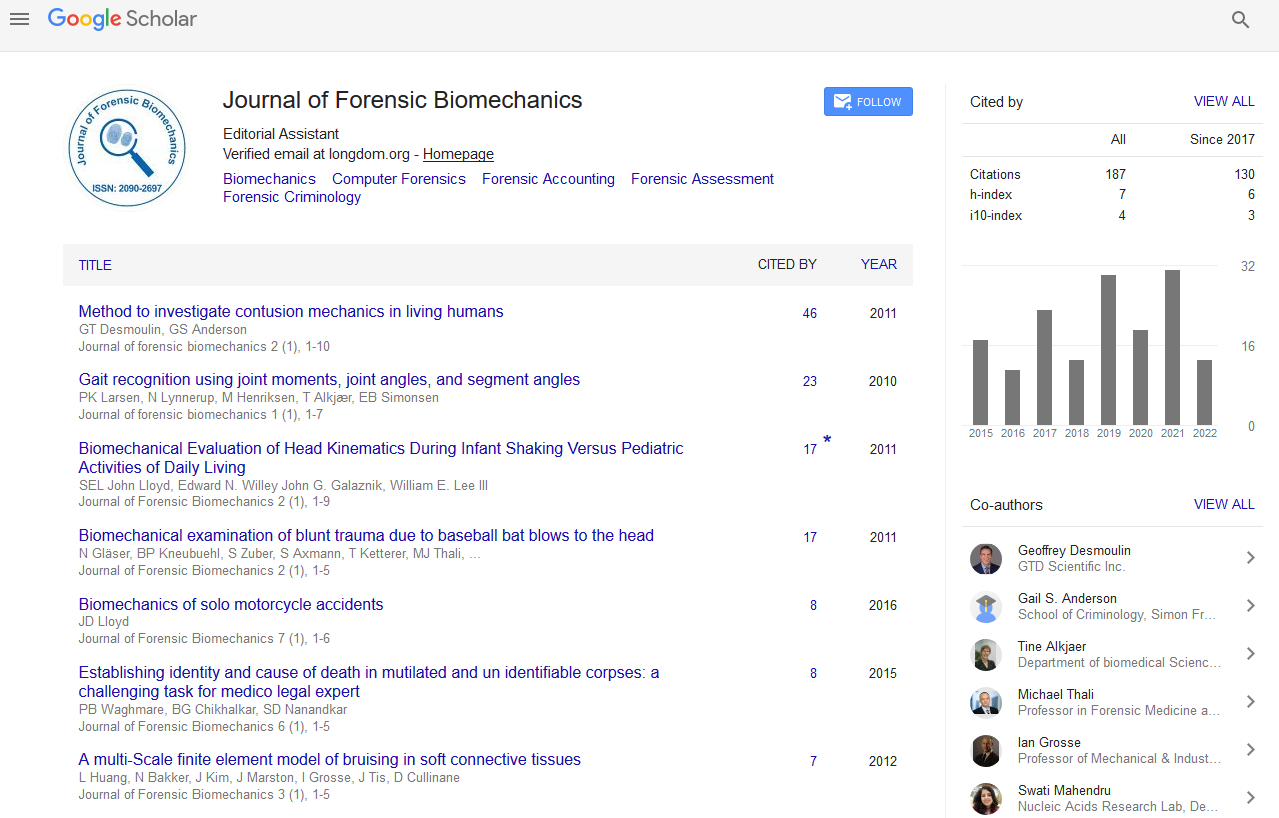Indexed In
- Genamics JournalSeek
- SafetyLit
- Ulrich's Periodicals Directory
- RefSeek
- Hamdard University
- EBSCO A-Z
- Geneva Foundation for Medical Education and Research
- Euro Pub
- Google Scholar
Useful Links
Share This Page
Journal Flyer

Open Access Journals
- Agri and Aquaculture
- Biochemistry
- Bioinformatics & Systems Biology
- Business & Management
- Chemistry
- Clinical Sciences
- Engineering
- Food & Nutrition
- General Science
- Genetics & Molecular Biology
- Immunology & Microbiology
- Medical Sciences
- Neuroscience & Psychology
- Nursing & Health Care
- Pharmaceutical Sciences
Abstract
Tracking tiger poaching: A need of harmonized DNA multi locus data across tiger range countries- S.P. Goyal- Wildlife Institute of India, India
S P Goyal, S K Singh, S Mishra and Imran Khan
The goal of tiger conservation is to maintain sufficiently large populations of each subspecies in its natural habitat that ensured high probabilities of long term survival. Poaching for illegal trade is a serious threat across its range. Success in tiger conservation is to curtail global trafficking in tiger parts and products. Development of genetic tools has enabled tracking poaching of endangered species to their source population, however, data so far available from different tiger reserves precluded to achieve the goals. Project is aimed at establishing genotyping data profile of tiger population in India and use for tracking poaching cases to its geographic origin. We examined genetic structure of tigers based on mitochondrial and nuclear DNA using scat samples collected from tiger reserves and tissue samples. Mitochondrial DNA data indicates unique haplotype in cytochrome b gene, which was used to differentiate population from northern (Rajaji to Pakke Tiger Reserves) to rest of the tiger populations. A major challenge in developing genotyping profile from nuclear DNA is to identify suitable microsatellite loci which are suitable for poor to good quality scat samples, therefore, we screened 60 loci. Of these, 26 loci ranged from moderate to good for using them on such samples that were <200 bp. We examined genetic structure of samples collected from Rajaji-Corbett Population (RC), Ranthambhore Tiger Reserve (RTR), Buxa Tiger Reserve (BTR), Central India (CI) and zoo (Z) tiger populations. The mean observed heterozygosity ranged 0.28 to 0.69 and was in the order of CI>RC>BTR>Z>RTR. The observed mean effective allele per locus ranged 1.53 to 3.76 with the highest in RC population. Fst values for population structuring indicates a population differentiation from moderate to high among examined populations and observed values (Fst>0.033) are suitable for Bayesian based population assignment. Genetic variation within population was c.82%, where as, among population was 18%. We discuss population assignment based on Bayesian approach for tracking tiger poaching. We discuss the loci which are easy to call and suggest use of common PCR products to calibrate and harmonize data generated on different machines across range countries
Published Date: 2021-05-25;

